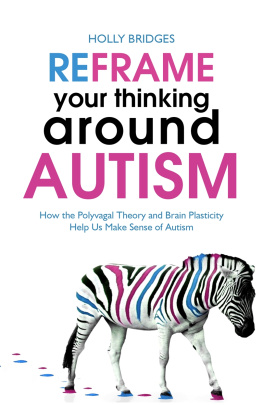Brad Clark - Polyvagal Theory: A Self-Help Polyvagal Theory Guide to Reduce with Self Help Exercises Anxiety, Depression, Autism, Trauma and Improve Your Life.
Here you can read online Brad Clark - Polyvagal Theory: A Self-Help Polyvagal Theory Guide to Reduce with Self Help Exercises Anxiety, Depression, Autism, Trauma and Improve Your Life. full text of the book (entire story) in english for free. Download pdf and epub, get meaning, cover and reviews about this ebook. year: 2020, publisher: Brad Clark, genre: Romance novel. Description of the work, (preface) as well as reviews are available. Best literature library LitArk.com created for fans of good reading and offers a wide selection of genres:
Romance novel
Science fiction
Adventure
Detective
Science
History
Home and family
Prose
Art
Politics
Computer
Non-fiction
Religion
Business
Children
Humor
Choose a favorite category and find really read worthwhile books. Enjoy immersion in the world of imagination, feel the emotions of the characters or learn something new for yourself, make an fascinating discovery.
- Book:Polyvagal Theory: A Self-Help Polyvagal Theory Guide to Reduce with Self Help Exercises Anxiety, Depression, Autism, Trauma and Improve Your Life.
- Author:
- Publisher:Brad Clark
- Genre:
- Year:2020
- Rating:3 / 5
- Favourites:Add to favourites
- Your mark:
Polyvagal Theory: A Self-Help Polyvagal Theory Guide to Reduce with Self Help Exercises Anxiety, Depression, Autism, Trauma and Improve Your Life.: summary, description and annotation
We offer to read an annotation, description, summary or preface (depends on what the author of the book "Polyvagal Theory: A Self-Help Polyvagal Theory Guide to Reduce with Self Help Exercises Anxiety, Depression, Autism, Trauma and Improve Your Life." wrote himself). If you haven't found the necessary information about the book — write in the comments, we will try to find it.
You Are 1-Click Away From Discovering How To Turn On Your Bodys Self-Healing Ability By Leveraging Your Understanding Of The Polyvagal Theory To Neutralize Stress, Anxiety, Depression And Many Other Physical & Mental Health Issues!
Ever since Dr. Stephen Porges developed the Polyvagal theory to explain how our autonomic nervous system controls our physical responses as well as emotional reactions, a lot of research and experimentation has gone into this theory to prove just how the functioning of our nervous system relates to our physical and mental health.
The findings have been mind-blowing, as the vagus nerve has been specially found to hold the key to good physical and mental health on a scale never thought possible.
But what exactly is this polyvagal theory?
What does it entail?
What does it have to do with good physical and mental health?
What do scientific studies say about the theory?
How can you take advantage of what the theory postulates to achieve optimal physical and mental health?
What physical and mental health benefits can you expect from an understanding and applying polyvagal theory?
This book will answer each of these and other questions you may have about polyvagal theory.
The book breaks down the seemingly complex topic using beginner friendly language to help you to start applying what you learn to get closer to better physical and mental health, free from stress, anxiety, panic attacks, autism, trauma, inflammation, Aspergers spectrum and many others.
More precisely, the book will teach you:
The polyvagal theory has indeed opened the world to an endless sea of possibilities as far as natural healing is concerned.
And this book will show you exactly how to take advantage of this scientific breakthrough for optimal health by breaking down everything in a language you can understand, even if this is the first time you are coming across the term polyvagal theory.
Are you ready to discover how it is even wildly possibly to neutralize stress, anxiety, depression and other health problems by simply stimulating the vagus nerve?
YES?
Click Buy Now With 1-Click or Buy Now to get started!
Brad Clark: author's other books
Who wrote Polyvagal Theory: A Self-Help Polyvagal Theory Guide to Reduce with Self Help Exercises Anxiety, Depression, Autism, Trauma and Improve Your Life.? Find out the surname, the name of the author of the book and a list of all author's works by series.



















